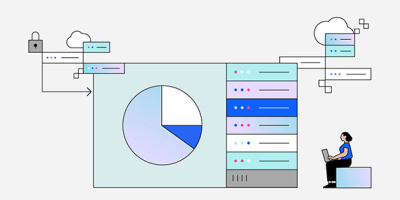Often, I need to convert from legacy dates to true dates. I convert mostly so I can easily do date arithmetic, but sometimes just for readability in ad hoc queries over old files. I'm a big fan of true dates and preach their usage when I get the chance, but there is some CPU overhead. This article is about improving efficiency in converting to true dates and reducing some of that overhead.
I know that discussing performance can start arguments that can become more heated and contentious that a political or religious debate. I don't want that to happen. So I'm just going to show you alternate code approaches and discuss how long each takes to run. Then you decide which the better approach is. Me, I'll go for the slightly shorter code, which also just happens to run significantly faster, but I'm getting ahead of myself.
One thing I've learned about legacy date fields is that occasionally they don't contain dates. Surprise! Trying to convert a date that is invalid causes a run-time check in RPG, usually around 2:00 a.m. Typically, good defensive programming would go something like this:
Use the TEST opcode to check if the legacy field is valid
If valid
convert legacy field to true date
else
logic to handle invalid data
endif
This is the kind of logic I was coding, using the TEST opcode to check that the date was valid. It turns out that there is a slightly shorter code structure that turns out to be faster.
I wrote short, CPU-intensive programs to run one million iterations of each code approach and compared the total CPU usage to get a relative difference in performance.
Alternative Approaches
Here's the code for DATCHK1, the one that uses the TEST opcode.
D DATCHK1 pr
d DATCHK1 pi
d NumDate s 6p 0 inz(080229)
d wkDate s d
d i s 10i 0
/FREE
for i = 1 to 1000000;
test(de) *YMD NumDate;
if not %error;
wkDate = %DATE(NumDate:*YMD);
else;
// Handle bad date
endif;
endfor;
*inlr = *on;
return;
/END-FREE
DATCHK1 takes the negative approach, checking for valid data before it performs the conversion. I ran it three times after hours on a lightly used development box at V5R3. In all three runs, it used 21 CPU seconds. Your mileage may vary, depending on your hardware.
The second program, DATCHK2 uses the MONITOR opcode.
D DATCHK2 pr
d DATCHK2 pi
d NumDate s 6p 0 inz(080229)
d wkDate s d
d i s 10i 0
/FREE
for i = 1 to 1000000;
monitor;
wkDate = %DATE(NumDate:*YMD);
on-error;
// Handle bad date
endmon;
endfor;
*inlr = *on;
return;
/END-FREE
DATCHKC2 takes the positive approach, assuming that the data is valid and immediately trying to convert it and trapping any failure. I ran DATCHK2 three times on the same development box. Two runs each used 12 CPU seconds and one used 11 CPU seconds.
Which Is Faster? And Why?
If we go with 12 seconds, DATCHK2 is about 43 percent faster than DATCHK1 ((21-12)/21*100). If you look at it the other way, using TEST takes 75 percent longer than using MONITOR ((21-12)/21*100). You may be able to work these numbers another way, but they clearly show that the second approach is significantly faster.
Why is the MONITOR approach faster? Or why is the TEST approach slower? I don't think it's poor coding on the part of the compiler programmers. I suspect, rather, that when you convert to a legacy date, the conversion routines insist on valid input and probably go through the same validity checking that the TEST opcode goes through. So when you use the TEST opcode approach, the validity checking is being done twice, and this validity checking is costly in terms of CPU time (but cheap in terms of happy, satisfied customers, not to mention frazzled developers who don't get called in at 2:00 a.m. with an exception due to an invalid date.)
Is It Worth It?
I have a colleague whose rule of thumb is "first make it right; then make it fast." Sometimes we developers overcomplicate programs, trying to tease out a couple more microseconds per record, when the number of records being processed is so low that we maybe save a CPU second a day. I'm not advocating sloppy, inefficient code, but we can sometimes get hung up on efficiency.
So why am I suggesting a differing code style that might save 10 CPU seconds per million iterations? It's a combination of several things:
- The MONITOR approach is one line shorter.
- The performance improvement is a nice bonus at no extra cost to complexity.
- I like the positive approach of assuming that the date is correct. Much as we may disparage legacy date fields, most of the time they do contain valid date values.
The MONITOR positive approach has other applications when editing and converting data, and it's well worth becoming familiar with it. For more information, check it out in the ILE RPG Language Reference manual.






















 More than ever, there is a demand for IT to deliver innovation. Your IBM i has been an essential part of your business operations for years. However, your organization may struggle to maintain the current system and implement new projects. The thousands of customers we've worked with and surveyed state that expectations regarding the digital footprint and vision of the company are not aligned with the current IT environment.
More than ever, there is a demand for IT to deliver innovation. Your IBM i has been an essential part of your business operations for years. However, your organization may struggle to maintain the current system and implement new projects. The thousands of customers we've worked with and surveyed state that expectations regarding the digital footprint and vision of the company are not aligned with the current IT environment. TRY the one package that solves all your document design and printing challenges on all your platforms. Produce bar code labels, electronic forms, ad hoc reports, and RFID tags – without programming! MarkMagic is the only document design and print solution that combines report writing, WYSIWYG label and forms design, and conditional printing in one integrated product. Make sure your data survives when catastrophe hits. Request your trial now! Request Now.
TRY the one package that solves all your document design and printing challenges on all your platforms. Produce bar code labels, electronic forms, ad hoc reports, and RFID tags – without programming! MarkMagic is the only document design and print solution that combines report writing, WYSIWYG label and forms design, and conditional printing in one integrated product. Make sure your data survives when catastrophe hits. Request your trial now! Request Now. Forms of ransomware has been around for over 30 years, and with more and more organizations suffering attacks each year, it continues to endure. What has made ransomware such a durable threat and what is the best way to combat it? In order to prevent ransomware, organizations must first understand how it works.
Forms of ransomware has been around for over 30 years, and with more and more organizations suffering attacks each year, it continues to endure. What has made ransomware such a durable threat and what is the best way to combat it? In order to prevent ransomware, organizations must first understand how it works. Disaster protection is vital to every business. Yet, it often consists of patched together procedures that are prone to error. From automatic backups to data encryption to media management, Robot automates the routine (yet often complex) tasks of iSeries backup and recovery, saving you time and money and making the process safer and more reliable. Automate your backups with the Robot Backup and Recovery Solution. Key features include:
Disaster protection is vital to every business. Yet, it often consists of patched together procedures that are prone to error. From automatic backups to data encryption to media management, Robot automates the routine (yet often complex) tasks of iSeries backup and recovery, saving you time and money and making the process safer and more reliable. Automate your backups with the Robot Backup and Recovery Solution. Key features include: Business users want new applications now. Market and regulatory pressures require faster application updates and delivery into production. Your IBM i developers may be approaching retirement, and you see no sure way to fill their positions with experienced developers. In addition, you may be caught between maintaining your existing applications and the uncertainty of moving to something new.
Business users want new applications now. Market and regulatory pressures require faster application updates and delivery into production. Your IBM i developers may be approaching retirement, and you see no sure way to fill their positions with experienced developers. In addition, you may be caught between maintaining your existing applications and the uncertainty of moving to something new. IT managers hoping to find new IBM i talent are discovering that the pool of experienced RPG programmers and operators or administrators with intimate knowledge of the operating system and the applications that run on it is small. This begs the question: How will you manage the platform that supports such a big part of your business? This guide offers strategies and software suggestions to help you plan IT staffing and resources and smooth the transition after your AS/400 talent retires. Read on to learn:
IT managers hoping to find new IBM i talent are discovering that the pool of experienced RPG programmers and operators or administrators with intimate knowledge of the operating system and the applications that run on it is small. This begs the question: How will you manage the platform that supports such a big part of your business? This guide offers strategies and software suggestions to help you plan IT staffing and resources and smooth the transition after your AS/400 talent retires. Read on to learn:
LATEST COMMENTS
MC Press Online